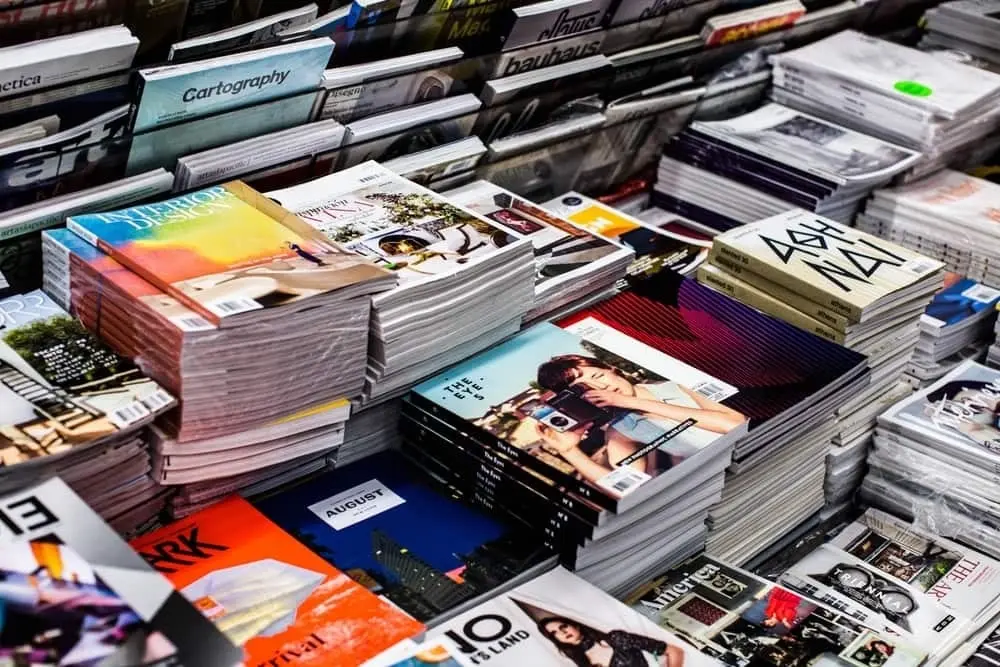Everything you need to know about fashion journalism
- General
Everything you need to know about fashion journalism
Contact us
Bengaluru
Campus 1 : JD School of Design, No. 18-1, Brigade Road, Bengaluru,Karnataka – 560 001.
Campus 2 : No. 40, Swan House, 4th Cross, Residency Road, Bengaluru, Karnataka – 560001.
Goa
Musthtifund Saunstha , Near Mahalaxmi Temple,Dada Vaidya Road, Goa-403001
Fashion journalism goes beyond the glossy pages of magazines and the celebrity red carpet. It’s a dynamic field that merges the worlds of fashion and journalism, demanding a keen eye for style, a sharp wit, and exceptional writing skills. This comprehensive guide delves into everything you need to know about becoming a fashion journalist, from understanding the multifaceted role to developing the necessary skills and navigating the exciting, yet competitive, world of fashion media.
Unveiling the World of Fashion Journalism
Fashion journalism encompasses a wide range of activities, including:
- Writing: Crafting engaging articles, reviews, trend analyses, and insightful features for print and online publications.
- Research: Staying abreast of current trends, historical influences, and emerging designers by conducting in-depth research.
- Interviewing: Engaging with designers, stylists, celebrities, and industry experts to gain unique perspectives.
- Event Coverage: Attending fashion shows, press conferences, and industry gatherings to report on new collections, launches, and trends.
- Content Creation: Developing video content, podcasts, or social media posts to reach a wider audience.
While a glamorous facade often surrounds fashion journalism, it requires dedication, hard work, and the ability to meet tight deadlines. This isn’t just about who wore what; it’s about weaving a captivating narrative that connects fashion to the broader cultural and social landscape.
Essential Skills for the Aspiring Fashion Journalist
Fashion Knowledge and Trend Savvy: A deep understanding of fashion history, design elements, and the ever-evolving trends is crucial. Regularly following fashion publications, attending events, and familiarizing yourself with the works of renowned designers will hone your knowledge. Consider delving into specific areas that pique your interest, like sustainable fashion or vintage clothing.
Exceptional Writing Skills: The ability to express complex ideas in a clear, concise, and engaging manner is paramount. Develop strong grammar, punctuation, and vocabulary to captivate your readers. Whether crafting a trend analysis or a designer profile, your writing should be informative, thought-provoking, and possess a distinct voice.
Research Prowess: Unveiling the stories behind the trends requires meticulous research. You’ll need to gather information from credible sources, conduct interviews, analyze data to create well-rounded content. Sharpen your research skills by utilizing industry publications, academic journals, and online databases. Learning to identify credible sources and cross-reference information will ensure your content is accurate and insightful.
Critical Thinking and Analysis: Fashion journalism goes beyond surface-level reporting. Developing a critical eye allows you to analyze trends, identify underlying influences, and offer insightful commentary on the cultural and social significance of fashion. Question the “why” behind trends, explore the inspiration behind collections, and analyze how fashion intersects with broader social movements.
Networking and Relationship Building: Building strong relationships within the fashion industry is essential for success. Attend industry events, connect with established journalists and editors (both online and offline), and build a strong online presence. Networking allows you to learn from seasoned professionals, generate freelance opportunities, and stay informed about industry happenings. Utilize platforms like LinkedIn and Twitter to connect with other fashion enthusiasts and industry insiders.

Visual Communication: An understanding of visual storytelling is an asset. Develop an eye for composition, color, and styling to enhance your written content or even create visually compelling video or social media posts. Learn to analyze photographs from fashion campaigns and runway shows, understanding how visuals communicate messages and complement the written word.
Business Acumen: Knowledge of the fashion industry’s business side, including marketing, branding, and retail, will give you a well-rounded perspective and allow you to craft content that resonates with both fashion enthusiasts and industry professionals. Understanding the commercial aspects of fashion allows you to analyze trends not just from a stylistic point of view but also from a market-driven perspective.
Charting Your Course: Education and Experience
While a formal education isn’t mandatory, a bachelor’s degree in journalism, fashion communication, or English literature can provide a strong foundation. These programs equip you with essential writing, research, and critical thinking skills. Consider specializing in fashion journalism if available at your chosen institution. Specialization allows you to delve deeper into the industry, learn from experienced professionals, and build a network within the fashion media world.
Building your portfolio is crucial. Start a fashion blog, write articles for online publications, or contribute to your college newspaper’s fashion section. Consider freelance opportunities or internships at fashion magazines, websites, or PR agencies. These experiences will not only enhance your skills but also provide valuable connections within the industry. Volunteer at fashion events or contribute to student-run fashion publications to gain practical experience.
The Fashion Media Landscape: Print, Digital, and Beyond
The fashion journalism landscape has drastically transformed in recent years. While established print publications like Vogue and Elle remain influential, digital media has exploded with fashion blogs, websites, and social media platforms like Instagram and YouTube offering a diverse range of voices and perspectives.
Understanding these different platforms and tailoring your content accordingly is crucial. Print publications often require in-depth analysis and a more formal writing style. Consider longer features delving into the history of a fashion house, a designer interview exploring their creative process, or a critical analysis of a particular trend.
Digital platforms allow for a more conversational tone and shorter, punchier content. Here, you could create trend reports highlighting key pieces for the upcoming season, curate shopping guides for specific styles or budgets, or offer live coverage of fashion week events. Video content creation and social media engagement are increasingly important for reaching a wider audience. Develop engaging video content showcasing street style trends, creating “get-the-look” tutorials, or interviewing up-and-coming designers. Social media platforms like Instagram allow for a more personal connection with your audience. Share behind-the-scenes glimpses from fashion events, curate mood boards showcasing your style inspiration, or host live Q&A sessions with industry experts.
Finding Your Niche and Standing Out
The fashion journalism field is competitive. Developing a unique voice and niche is essential to stand out. Are you passionate about sustainable fashion? Do you have a keen eye for vintage styles? Identifying your area of expertise and tailoring your content to a specific audience will help you carve your space in the industry.
Stay updated on current trends, but don’t be afraid to challenge the mainstream. Offer fresh perspectives, in-depth analysis, and insightful commentary that sets you apart from the crowd. Perhaps you focus on the ethical and environmental impact of the fashion industry, or delve into the intersection of fashion and technology. Your unique voice and approach will attract a dedicated following and establish you as an authority in your chosen niche.

Building a Successful Career in Fashion Journalism
Freelancing: Starting as a freelancer allows you to build your portfolio and work with various publications. This can be a great way to gain experience and establish yourself in the industry. Identify publications that align with your interests and pitch story ideas that showcase your expertise. Develop strong relationships with editors and consistently deliver high-quality work to build a solid freelance base.
Staff Writer Positions: As your experience grows, you can target staff writer positions at fashion publications or websites. These roles typically offer a steady income and benefits, allowing you to focus on in-depth projects and develop a more consistent voice within a specific publication. Research publications you admire and tailor your resume and cover letter to highlight your skills and experience relevant to their target audience and content style.
Content Creation: With the rise of digital media, content creation has become a significant aspect of fashion journalism. Consider creating your own fashion blog or YouTube channel to showcase your knowledge and passion for fashion. Building a strong online presence can lead to brand partnerships, freelance opportunities, and even book deals or speaking engagements.
Public Relations: Fashion PR firms often require skilled writers who can craft compelling press releases, manage social media outreach, and curate brand narratives. Leveraging your writing skills and fashion knowledge, you can contribute to the success of fashion brands by generating positive press coverage and building brand awareness.
Evolving with the Industry: The fashion journalism landscape is constantly evolving, with new technologies and platforms emerging. Staying abreast of these changes and adapting your skillset is crucial for long-term success. Consider learning basic video editing skills, exploring podcasting as a medium, or delving into the world of social media marketing to remain relevant in the ever-changing digital media landscape.
The Rewards of Fashion Journalism
A career in fashion journalism can be incredibly rewarding. It allows you to combine your passion for fashion with your love for writing and storytelling. You’ll have the opportunity to interview inspiring individuals, attend exclusive events, and shape the conversation surrounding fashion and its impact on the world. Whether you’re crafting a thought-provoking analysis of a runway collection or sharing sustainable fashion tips with your audience, you’ll be contributing to a dynamic and ever-evolving industry.
Some important points to Consider in Fashion Journalism:
Ethical Considerations:
- Sustainability: Fashion journalism can be a powerful tool to promote sustainable practices within the industry. Highlight eco-conscious brands, innovative materials, and designers committed to ethical production.
- Diversity and Body Positivity: The fashion industry has historically lacked diversity in its representation. Advocate for inclusivity by featuring models and designers of all ethnicities, body types, and genders.
- Labor Practices: Investigate the working conditions within the fashion industry, exposing unfair labor practices and advocating for ethical treatment of garment workers.
Emerging Trends:
- Technology: Explore the intersection of fashion and technology, such as 3D printing in fashion design, virtual reality shopping experiences, and the rise of fashion influencers on social media platforms like TikTok.
- Streetwear: Streetwear has become a dominant force in fashion. Delve into the cultural significance of streetwear, analyze its influence on luxury brands, and explore the rise of independent streetwear labels.
- Gender Fluidity: Gender fluidity is increasingly influencing fashion trends. Discuss the rise of unisex clothing, the blurring of traditionally gendered styles, and the designers challenging traditional notions of masculinity and femininity.
Finding Inspiration:
- Travel: Immersing yourself in different cultures can broaden your perspective on fashion. Write about traditional clothing in various regions, the influence of travel on designer collections, or the rise of global street style trends.
- Art and Film: Fashion is heavily influenced by art movements and historical periods. Explore the inspiration behind a particular collection, analyze the use of color and texture in fashion photography, or delve into the costuming choices in a period film.
- Museums and Archives: Fashion museums and archives offer a wealth of historical context and inspiration. Write about a specific fashion exhibit, explore the evolution of a particular garment, or analyze the cultural impact of a renowned designer through their archived works.

Beyond the Runway:
- Vintage Fashion: Vintage fashion offers a sustainable and unique alternative to fast fashion. Explore the history of vintage clothing, profile vintage stores and collectors, or offer tips on incorporating vintage pieces into contemporary wardrobes.
- The Business of Fashion: Understanding the business side of fashion adds depth to your journalism. Analyze the impact of globalization on the industry, explore the rise of e-commerce platforms, or delve into the marketing strategies of luxury brands.
- The Psychology of Fashion: Fashion choices are often influenced by psychology. Explore the role of clothing in self-expression, analyze the impact of trends on consumer behavior, or discuss the psychology of color in fashion design.
Conclusion:
Remember, success in fashion journalism requires dedication, perseverance, and a genuine passion for the world of fashion. By honing your skills, nurturing your creativity, and carving your own niche, you can navigate your path to a fulfilling and exciting career in this captivating field.
